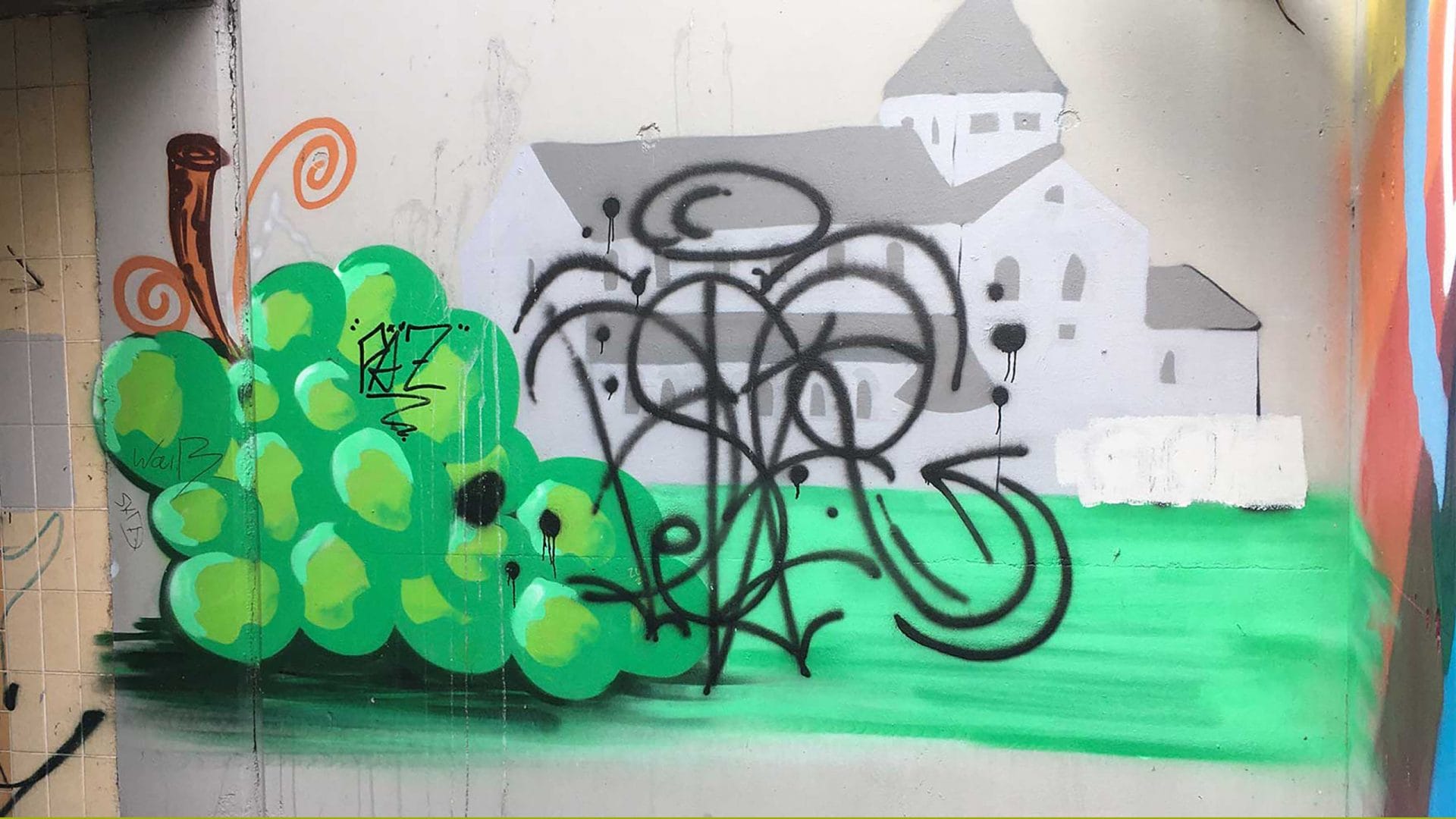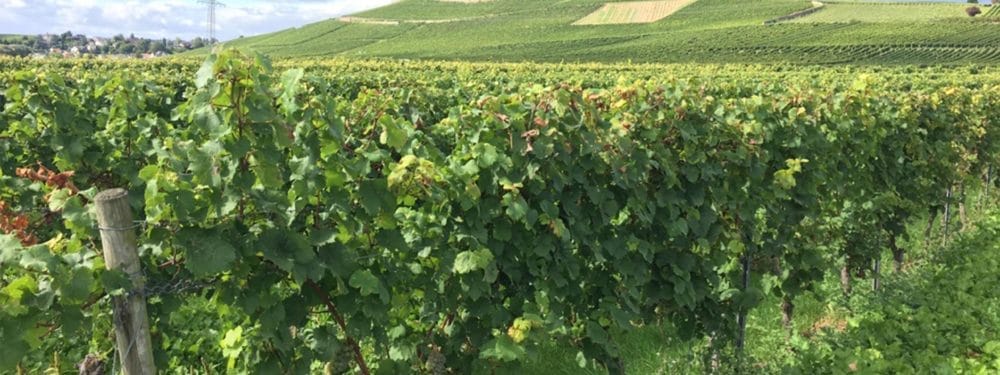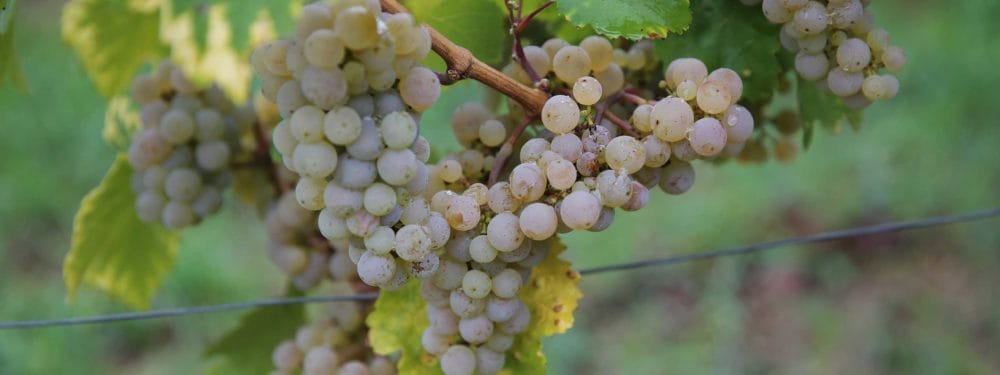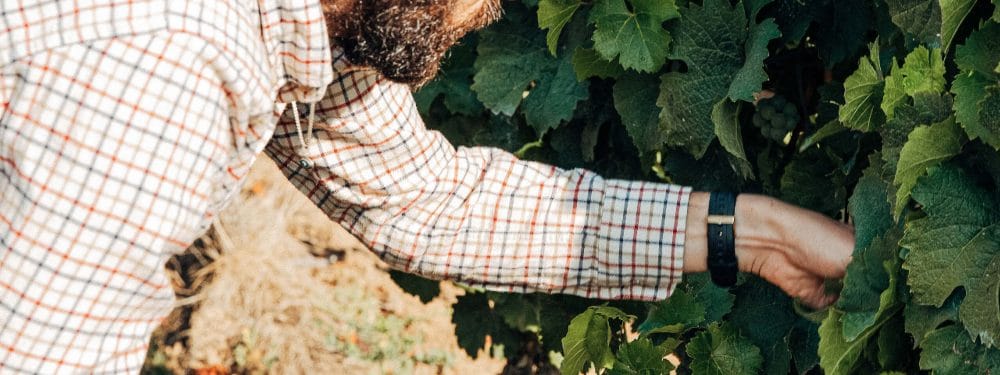Summer, sun, sunburn
We have once again visited “our” vineyard in Oestrich-Winkel. The village itself is shaped by viticulture: on every corner there is a painting or craft work reminiscent of wine. The Rheingau is an important center for viticulture in Germany: the University of Oenology is just one village away in Geisenheim. Young winemakers from all over Germany come together here to deal intensively with wine.
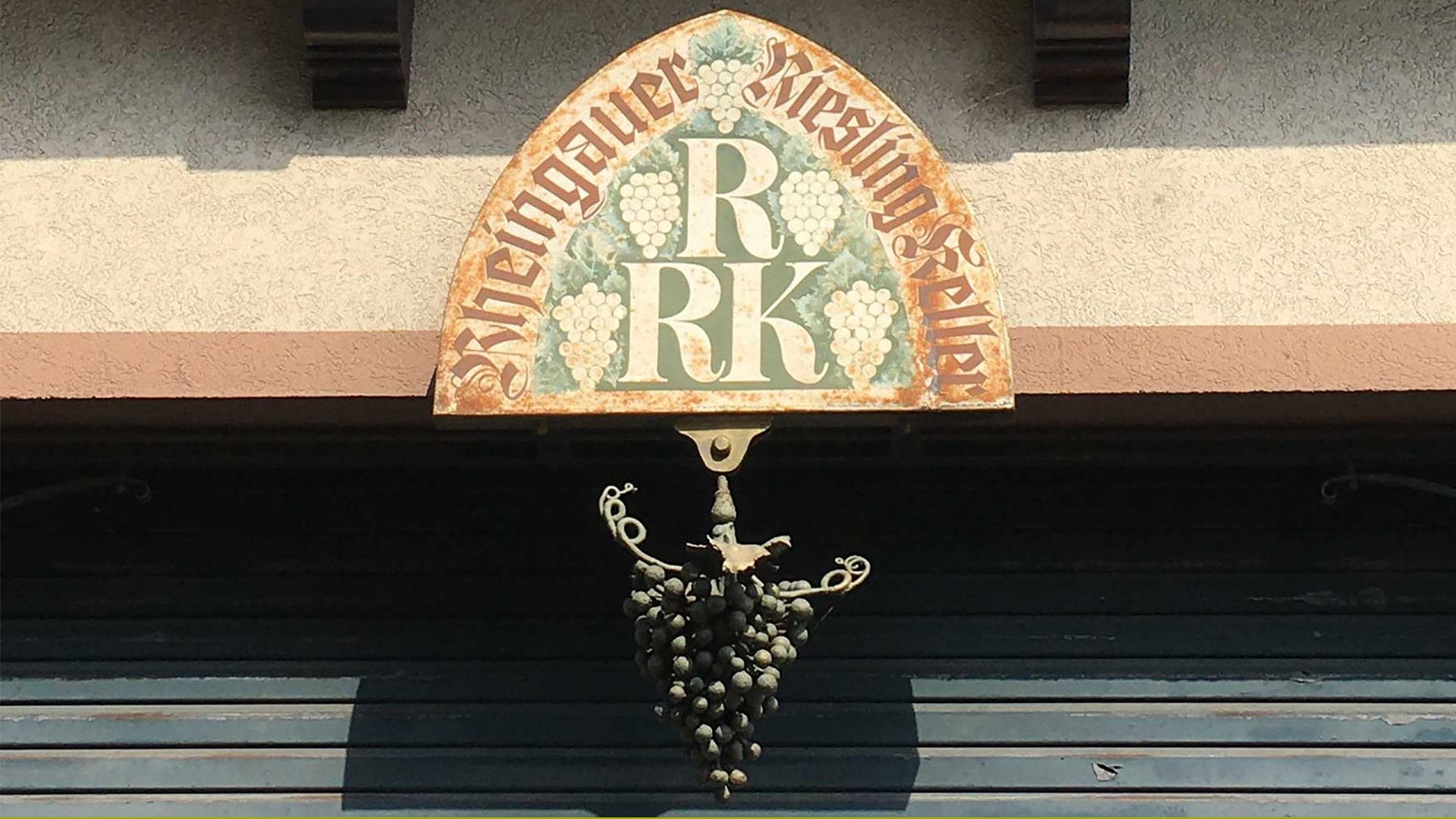
We stay in Oestrich-Winkel and deal intensively with our wine
Es ist Hochsommer und es ist trocken. Sun is good for the grapes on the one hand, but too much of a good thing is unfortunately also nothing. Es geht mal wieder um das richtige Gleichgewicht. Dazu wird ein Teil der Blätter weggeschnitten, damit die Trauben mehr Sonne bekommen. Etwas Schatten ist aber auch wichtig, denn sonst erleiden die Trauben einen „Sonnenbrand“. Das betrifft im Wesentlichen die Rebenseite, die zur Mittagzeit direktes Sonnenlicht abbekommt. Durch zu viel Sonne bekommen die Trauben dunkle Stellen auf der Haut und trocknen komplett aus.
The soil must also be protected from drought. For this, the soil is either mowed, mulched or plowed. There is currently no high planting between the vines. To protect the soil again, rye and wheat are sown as ground cover. Not every row is sown, only every second one, in order to create a balance between protection from the sun and water competition.
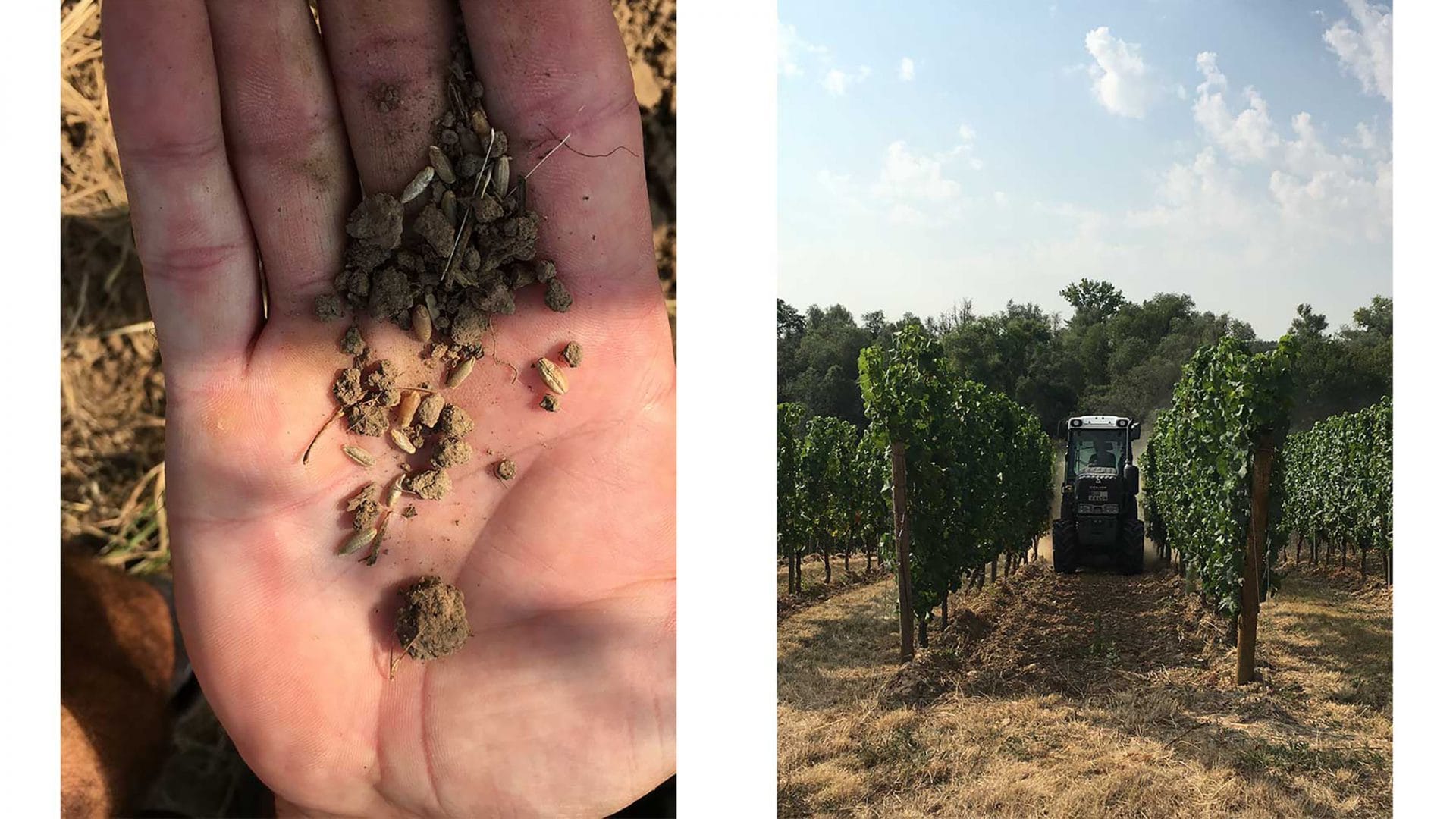
Less is more
Another important step was recently completed. The yield was reduced by pruning the grapes. Only the shoulder, i.e. the broad upper part of a grape, remains hanging, so that the strength of the vine is concentrated in fewer fruits.
When it comes to wine, less is often more, at least more quality. This concentrated grape juice is then used in the cellar to produce the high quality of the “first location” or the “large location”. Correct, what counts is “location, location, location” because that essentially determines the character of a wine via the soil and the microclimate.
We are looking forward to the development of our grapes from the Jesuit garden. For the end of September we have already set a date for the harvest so that we can help ourselves.
